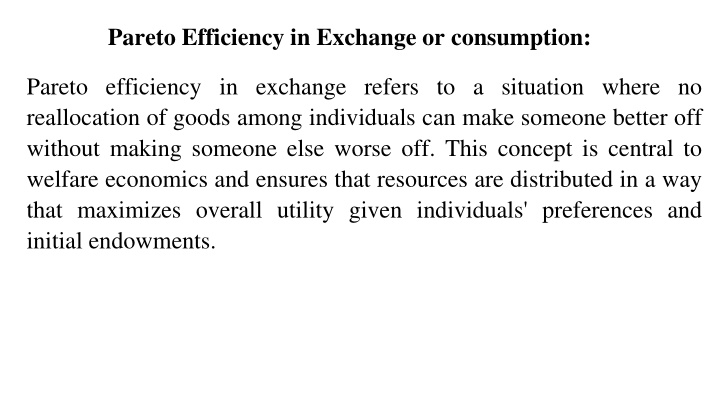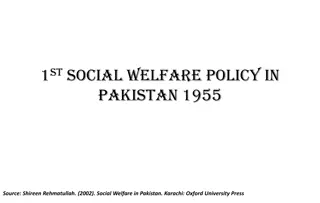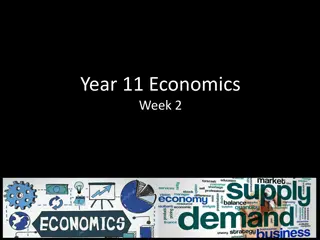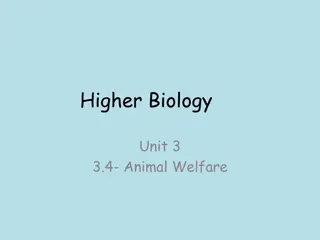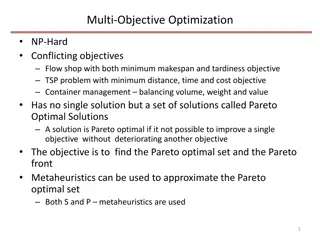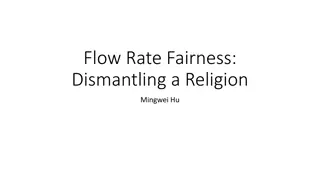Pareto Efficiency: Maximizing Welfare through Optimal Resource Allocation
Pareto efficiency plays a crucial role in welfare economics, ensuring resources are distributed to maximize overall utility while balancing individual preferences and initial endowments. It encompasses both exchange and production, where no further improvements can be made without negatively affecting someone. Key conditions include utility maximization, equality of marginal rates of substitution, and full resource utilization.
Download Presentation

Please find below an Image/Link to download the presentation.
The content on the website is provided AS IS for your information and personal use only. It may not be sold, licensed, or shared on other websites without obtaining consent from the author.If you encounter any issues during the download, it is possible that the publisher has removed the file from their server.
You are allowed to download the files provided on this website for personal or commercial use, subject to the condition that they are used lawfully. All files are the property of their respective owners.
The content on the website is provided AS IS for your information and personal use only. It may not be sold, licensed, or shared on other websites without obtaining consent from the author.
E N D
Presentation Transcript
Pareto Efficiency in Exchange or consumption: Pareto efficiency in exchange refers to a situation where no reallocation of goods among individuals can make someone better off without making someone else worse off. This concept is central to welfare economics and ensures that resources are distributed in a way that maximizes overall utility given individuals' preferences and initial endowments.
Conditions for Pareto Efficiency in Exchange: No Further Mutual Gains: In a Pareto efficient allocation, all possible gains from trade have been exhausted. This means that any potential trade or reallocation that could improve one person's utility without reducing another's has already occurred. Utility Maximization: Each individual maximizes their utility given their budget constraint and the prevailing prices. This condition implies that individuals are making the best possible choices given their preferences and the resources available to them.
Equality of Marginal Rates of Substitution (MRS): For an allocation to be Pareto efficient, the marginal rate of substitution between any two goods must be equal for all individuals. Feasibility: The allocation must be feasible, meaning the total amount of each good allocated to individuals cannot exceed the total amount available
Pareto efficiency in production or distribution: Pareto efficiency in production refers to a state where resources are allocated in a manner that it is impossible to increase the production of one good without decreasing the production of another, or improving the welfare of one individual without reducing the welfare of another. It embodies the idea of maximizing overall output without sacrificing the well-being of any individual or group. Key features include:
Full Resource Utilization: All available resources are efficiently employed in production. Production Efficiency: Goods are produced at the lowest possible cost, maximizing output. Pareto Optimality: No further improvements in production can be made without negatively impacting someone's welfare. Achieving Pareto efficiency in production ensures that resources are utilized optimally, leading to the most efficient allocation of resources and maximizing societal welfare.
